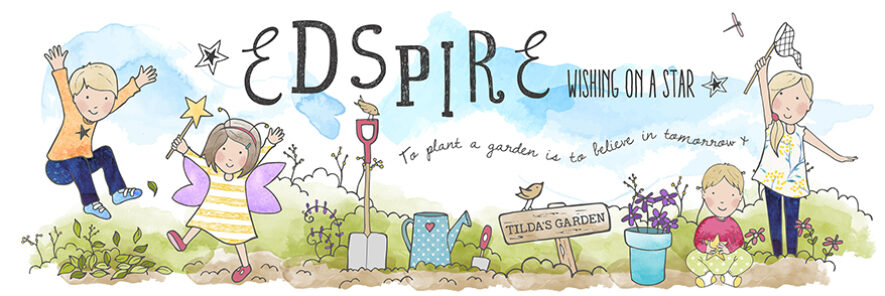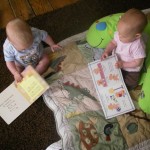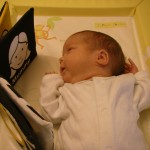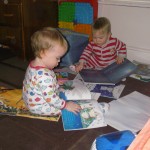Today I am giving a more indepth review of a selection of activities that we have tried from the I CAN Babbling Babies Activity Pack. You can read our initial review here and find out more about the children’s charity here.
I CAN is the children’s communication charity and the activity packs that we are currently using and reviewing have been created to develop language with babies and toddlers. They are very user friendly and provide great ideas for family activities as well as providing reassurance that the little things we all do on a daily basis provide the initial stepping stones needed by babies learning to talk, read and write.
Today I am focusing on two developmental areas that are covered with the Babbling Babies activity cards; Learning to Listen and Learning and Understanding New Words.
These beautifully illustrated activity cards are designed for parents and families to encourage communication skills in your babling baby or talkative toddler. The activities will keep both adult and child entertained, as well as helping to build the parent and child bond.
Learning to Listen – Musical Instruments
This activity is all about exploring sounds. Sit facing your baby with a selection of instruments between you. Play one of the instruments gently and describe the sound that it makes. Play the different instruments and encourage your baby to join in too. Is there a particular instrument that they they like best?
Esther and William love instruments and we use them all the time. I have blogged before about our musical mayhem sessions but I also encourage free play with the instruments so that Esther and William can make discoveries for themselves about volume and sound and make decisions about what they like.
We also explore rhythm and tempo, playing our instruments and clapping along to some of our favourite songs.
As Esther and William get a bit older we are starting to explore other concepts such as high and low, loud and soft, hard and soft. So much can be learned through musical play and so much vocabulary can be introduced, learned and reinforced.
The activity card from I CAN provides a springboard for as many creative activities as you care to try with your little babbler.
The key is to talk about everything that you do.
Learning to Listen – Singing and Rhymes
Singing is great with babies – it has many benefits. It helps them to learn about noise, sounds and words. Singing can be done anytime, anywhere and can be part of every day.
In the Edspire household we love singing! I have sung to Esther and William from birth. I used to sit next to their incubators in NICU and sing them hymns, traditional songs and nursery rhymes. Esther’s first ever favourite song was ‘There was a princess long ago …’; William’s was ‘The Grand Old Duke of York’. I think that now their favourites are ‘Wind the Bobbin’ Up’ and ‘The Wheels on the Bus’ but really they just love singing and in particular action songs. They are particularly good at Incy Wincy Spider which we often have to have on repeat in the car!
Esther and William are just at an age now when they are starting to try to sing along. This is very cute. They are so familiar with so many of the songs that we sing every day that I am certain it will not be long before they are properly singing along.
Singing has been wonderful for the development of their vocabulary. It has also helped them be able to identify different animals and body parts.
It is one of the most valuable things that we do and singing has been recognised by I Can as an important building block in babies language development.
This activity card gives suggestions for age appropriate songs and how to begin exploring them with your baby. A fabulous family resource particularly if you are not a keen singer or are not familiar with many children’s songs.
Learning and Understanding New Words – Make a Story
This is one of my favourite activity cards in the Babbling Babies pack from I CAN.
We have used the one of the ideas from the card to create a record of one of our visits to Leeds Castle. Now when we go back there I can show Esther and William this record to remind them of what we might see and do there. I am going to make a series of little books with Esther and William based on this simple idea. I would like to make ones about special visits but also about some of our every day routines as I think that this will help them become familiar with what we do, when we do it and why it is done. It will also help to develop the language that they will need to be using in these situations everyday. The first one we are going to do is a Bedtime Book showing their routine in pictures and simple sentences so that we can look at it together to become familiar with the words and instructions that they hear and need to respond to. I also think it will be a useful guide for Grandparent and Godparents who babysit sometimes.
Learning and Understanding New Words – Sharing Books and Stories
I have read to Esther and William since before they were born. They were each given a special book of their own as a birth present and we do all we can in our house to foster a love of words, a thirst for stories and a respect for books. Esther and William love being read to, they love looking at picture books, they love noisy and interactive books, they love listening to stories. They love books and this is playing a huge part in their learning and understanding of new words.
If you are not like me and reading aloud dramatically does not come naturally to you, if you are unsure of where to start with books with children so young then I CAN give some simple ideas to point you in the right direction.
0-6 Months
1 Sit Baby on your lap, somewhere quiet
2 Find some books to look at together – soft books with very simple pictures and no story
3 Slowly turn the pages and say what is on each page
4 Make your voice interesting by making any animal noises etc6-12 Months
1 Sit close together, somewhere quiet
2 Find some books to look at together – board books with simple pictures and few words. Touchy feely books are good
3 Let Baby hold the book and turn the pages
4 Don’t worry if they focus on one page or turn to the last page first
5 Talk about what you see on the page they are most interested in12-18 Months
1 Sit close together, somewhere quiet
2 Find some books to look at together – books with short stories and simple sentences. Lift the flap books are good
3 Let Baby choose the book
4 Say ‘Turn the page’ and let them turn the page themselves
5 Make noises to go with the story
6 Talk about what you see on each page
Reviewing this particular activity card has inspired me to write a series of blog posts about reading with babies and infants. Over the next few weeks and months I am going to share with you some of our favourite books and what we do with them. Esther and William love to share books and the word we hear most often in our house is not NO but AGAIN as they ask for their favourite stories to be read with them over and over again.
I hope through this review you gain a sense of how entusiastic I am about these I CAN activity cards for developing language with babies. I am now keen to find out what other resources the charity offer and if there is a way that I can work with them to help children and families learn to communicate creatively and effectively.
Perhaps you would like to do the same by buying a set of activity cards for you and your little ones. All proceeds from sales of these packs go towards I CAN‘s work with the 1.2 million children in the UK who have long term speech, language and communication difficulties.
To purchase Babbling Babies or Toddler Talk, available in hardback or paperback, please visit the I CAN Online Shop.
I was sent one Babbling Babies pack and one Toddler Talk pack for the purposes of this review.<





